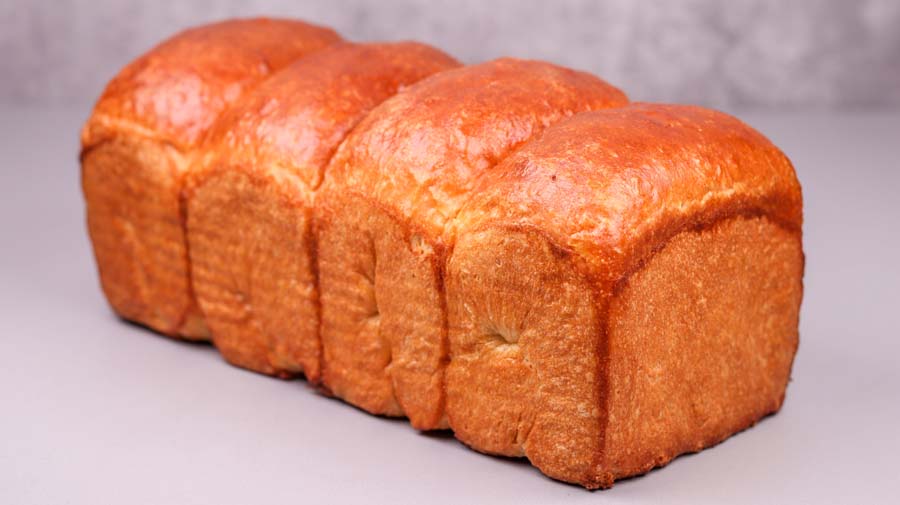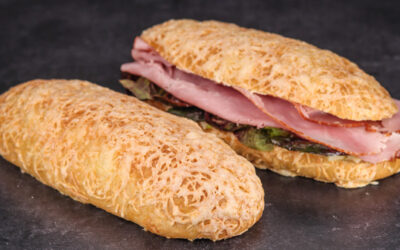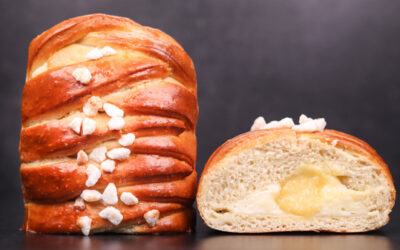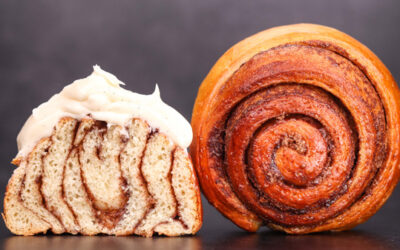Tangzhong is a roux made of flour and liquid. Part of the total flour of a bread recipe is cooked with the liquid until it becomes thick. The cooking process gelatinizes the starch in the flour and makes it swell up and absorb much of the liquid be it water, milk, or anything else you decide to use. Cooking the flour also impacts the gluten forming proteins which cannot produce strong gluten after being heat treated.
Having weaker gluten and the ability to absorb and retain more liquid are great advantages in breadmaking. Breads made with tangzhong are lighter and fluffier while being able to stray that way for longer. It’s a simple technique with great impact.
We’ve made this type of bread before, but that was back in the day when I was all about hand-kneading. Nowadays, giving the dough a fold or two is my preferred method. As it turns out any bread can be made this way, and since someone recently asked me about it, I decided to redo my old milk bread recipe to suit my new method.
The result is a super easy to make and super light and puffy milk loaf. You can also use this recipe to make individual rolls.
Watch the video down below for detailed instructions.
Ingredients
For the roux –
50g (1.75oz) white bread flour
300g (10.6oz) milk
More milk for topping up the roux after cooking.
8g (0.28oz) salt
20g (0.7oz) sugar
40g (1.4oz) butter
For the dough –
4g (0.14oz) instant dry yeast or 4.8g (0.17oz) active dry yeast or 12g (0.42oz) fresh yeast
350g (12.35oz) white bread flour
1 egg for glazing
To learn more about no-knead bread dough temperature control click here.
The flour I use has a protein content of 13%. If your flour is weaker, then you may need to lower the hydration.
If you are using active dry yeast, then you may need to let it sit in the water for 10 minutes before adding the other ingredients or else it could take a lot longer to raise the dough.
Method
- Make the tangzhong. Combine the flour and milk in a small pan and cook on medium-high heat for around 5 minutes until the mix becomes thick.
- Transfer the roux to a bowl set over scales, so you can measure how much of the milk has evaporated. Top up back to the initial total amount of 350g.
- Mix in the butter, sugar, and salt. Cover and leave to cool down.
- Make the dough. Add the yeast to the roux and give it a good mix. Add the flour and mix to a dough. *Desired dough temperature around 24C (75F). If your dough is warmer, then it will ferment more rapidly. If it is cooler, then it will take longer. Adjust fermentation time accordingly.
- Cover and ferment for 45 minutes.
- Fold.
- Ferment for 45 minutes.
- Divide the dough into 4 equal pieces. Pre-shape, cover, and rest for 30 minutes.
- Final shaping. Arrange the individual segments in a greased 2lb (900g) loaf tin.
- Cover and proof for 2 hours.
- Brush with egg and bake at 160C (320F) fan on for 30 minutes.
- Remove the loaf from the tin and place it back into the oven for another 15 minutes of baking.
Keep in mind that the conditions in each kitchen are different, so fermentation times may vary for you. It is up to the baker to control the bread and react accordingly.
Your oven may be different too, so your baking time may vary.



